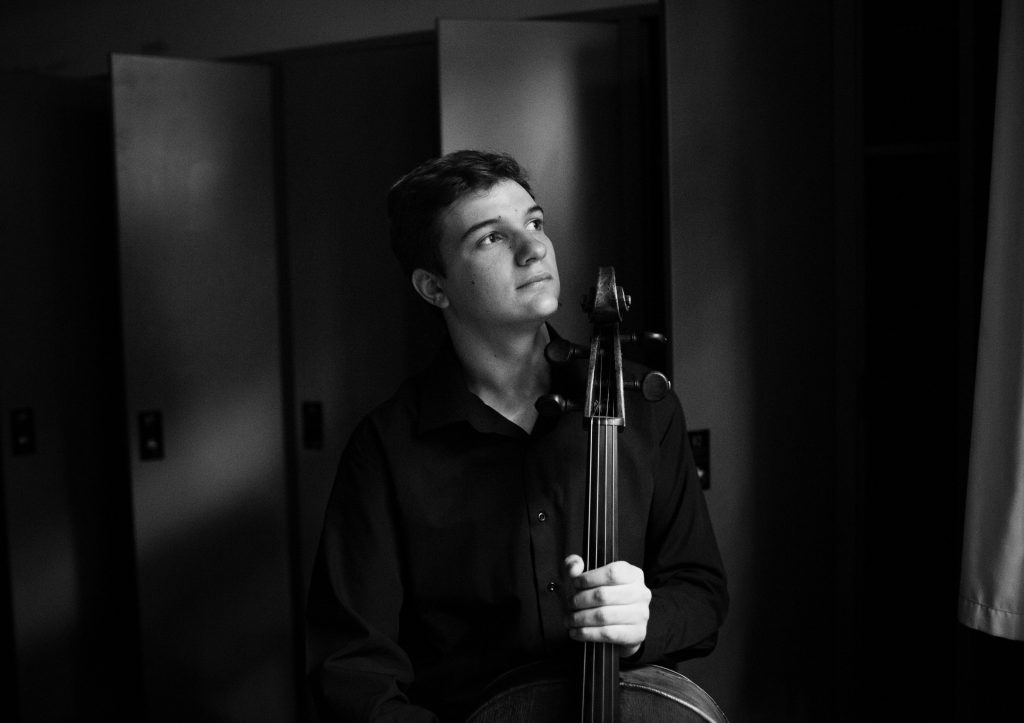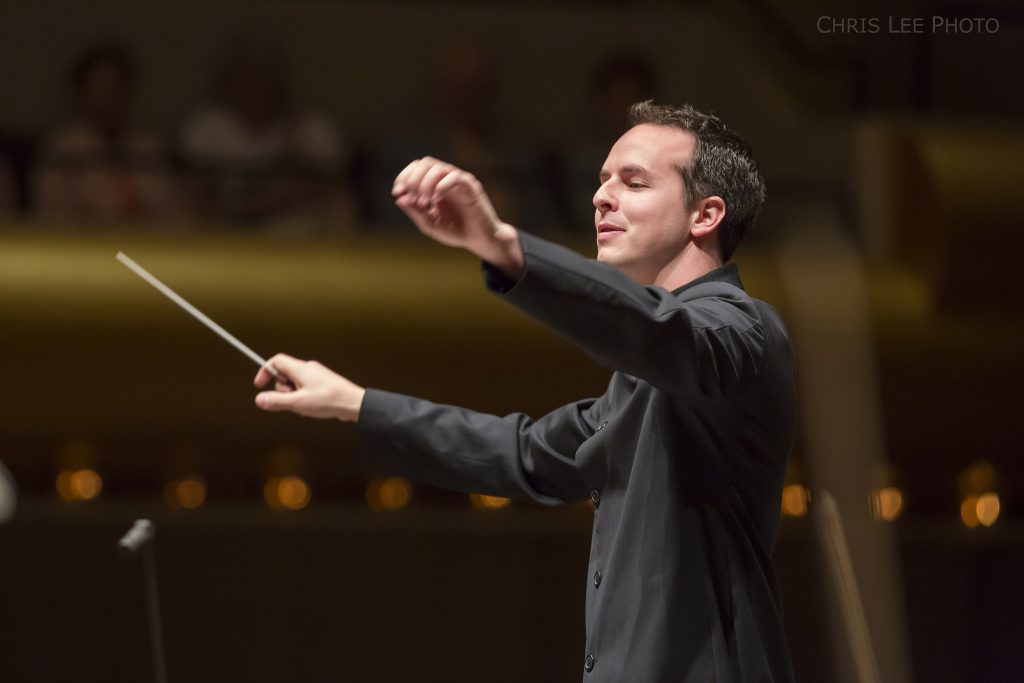Cellist Andrei Ioniță Amazes in Elgar Cello Concerto with the San Diego Symphony
Friday’s San Diego Symphony concert turned out to be an evening of rhapsodies, even if the only rhapsody listed on the program was Georges Enesco’s inescapable “Rumanian Rhapsody” No. 1.
But by the time Edward Elgar got around to writing his massive Cello Concerto in E Minor, given a riveting interpretation Friday by the impressive young Romanian cellist Andrei Ioniţă, he had discarded the customary three-movement concerto structure for a freewheeling rhapsody of kaleidoscopic mercurial moods. And guest conductor Case Scaglione’s account of Zoltán Kodály’s rambunctious, single movement Concerto for Orchestra exuded rhapsody from every measure.First place winner in the cello division of the 2015 International Tchaikovsky Competition in Moscow, Ioniţă established his credentials from the opening phrase of the Elgar: a luxurious yet sleek sonority expressed in supple phrasing of exquisite sensitivity. I was impressed how effortlessly he infused Elgar’s long, serpentine themes with unrelenting drive that still took into account the composer’s unmistakable valedictory edge. At age 24 Ioniţă revealed uncanny insight, yet I recall that 50 years ago the young Jacqueline Dupré also claimed international attention in the last century playing this Elgar Concerto.
In Scaglione, Ioniţă found a stellar compatriot who savored the nobility of Elgar’s slow movements—they dominate the Cello Concerto—yet exalted in its two shorter ebullient movements. With the powerful yet polished collaboration from the orchestra, these guest musicians took the Copley Symphony Hall audience on a profound, rewarding journey.
Scaglione made an equally convincing case for Kodály’s Concerto for Orchestra, a colorful single movement work bursting with bracing themes that reflect the composer’s extensive ethnomusicological research in Central Europe early in his career. Kodály’s inventive orchestration particularly impressed me: for example, in a quiet section that began as a wistful solo for the Principal Cello, Kodaly subtly added the second cello and two violas to form a glowing chorale for low strings whose main theme was then transformed by solo clarinet. Cellists Yao Zhao and Chia-Ling Chien, violists Chi-Yuan Chen and Nancy Lochner, as well as clarinetist Sheryl Renk carried out their solo assignments with winning aplomb.
As a concerto designed to show off the various sections of the orchestra, the work sported flashy fanfares for the trumpet section, charming solos for all of the first chair woodwinds adroitly accompanied by harp, and broadly arched themes for the horn section, as well as animated dances for full orchestra spurred on by resounding timpani. Scaglione and the orchestra gave this work an exciting, buoyant, and brilliantly detailed performance.
Commissioned by the Chicago Symphony in 1940 to commemorate its 50th anniversary, this Concerto for Orchestra surely deserves greater attention. Prior to this concert, according to the program notes, Kodály’s Concerto for Orchestra had never been programmed by the San Diego Symphony.
Enesco’s “Rumanian Rhapsody” No. 1 has never lacked for public exposure, and, although it is a deliciously spirited potpourri of infectious traditional tunes from Enesco’s native Romania, played immediately after Kodály’s Concerto for Orchestra, it struck me as rather shallow. It makes a perfect encore for an orchestra on tour, however, or an opening salvo at a pops concert.
According to the program, we should have heard Claude Debussy’s “Jeux” to open this concert, but neither the Debussy nor the originally announced conductor, frequent guest on the San Diego podium Cristian Măcelaru, appeared. According to Martha Gilmer, San Diego Symphony CEO, Măcelaru asked to be excused from his San Diego engagement this weekend in order to perform in Leipzig with his fellow countryman pianist Radu Lupu. She released him and engaged Case Scaglione, who had served a successful stint as an Associate Conductor with the New York Philharmonic and currently conducts a chamber orchestra outside of Stuttgart, Germany.
Scaglione substituted Richard Wagner’s Overture to Tannhäuser for the Debussy, which must be a favorite of his since he conducted it without a score. Principal Horn Benjamin Jaber and his section played the hushed opening chorale—the theme from the opera’s signature “Pilgrim’s Chorus”—with shimmering, transcendent allure such as I have never before experienced in a live performance. While I was convinced by Scaglione’s overall shaping of this beloved Overture, I was disappointed in the full orchestra march at the center of the Overture, which struck me as more exuberant than burnished.
This concert by the San Diego Symphony was presented at the Jacobs Music Center in downtown San Diego on April 6, 2018, and repeated in the same venue on April 7. A shorter version of the program will be presented as a matinee on April 8, 2018, at the Village Church in Rancho Santa Fe. Cellist Andrei Ioniţă will be featured on the orchestra’s chamber music series on Tuesday, April 10, 2018, at 7:30 p.m. in the Auditorium at TSRI.

Ken Herman, a classically trained pianist and organist, has covered music for the San Diego Union, the Los Angeles Times’ San Diego Edition, and for sandiego.com. He has won numerous awards, including first place for Live Performance and Opera Reviews in the 2017, the 2018, and the 2019 Excellence in Journalism Awards competition held by the San Diego Press Club. A Chicago native, he came to San Diego to pursue a graduate degree and stayed.Read more…




